
Donate to Innerviews
Since 1994, Innerviews has provided uncompromising, in-depth interviews with musicians across every genre imaginable. And it does that with no trackers, cookies, clickbait, or advertising.
Your donations are welcome to help continue its mission of highlighting incredible music and artists, without any commercial considerations.
Your contributions will be instantly transformed into stories and videos, and cover hosting and web management costs. Importantly, your dollars will help ensure Innerviews remains absolutely free to all visitors, independent of their ability to financially support it.
Please consider making a donation today by using the PayPal QR code below.

Marilyn Mazur
The Music is the Ritual
by Anil Prasad
Copyright © 2023 Anil Prasad.
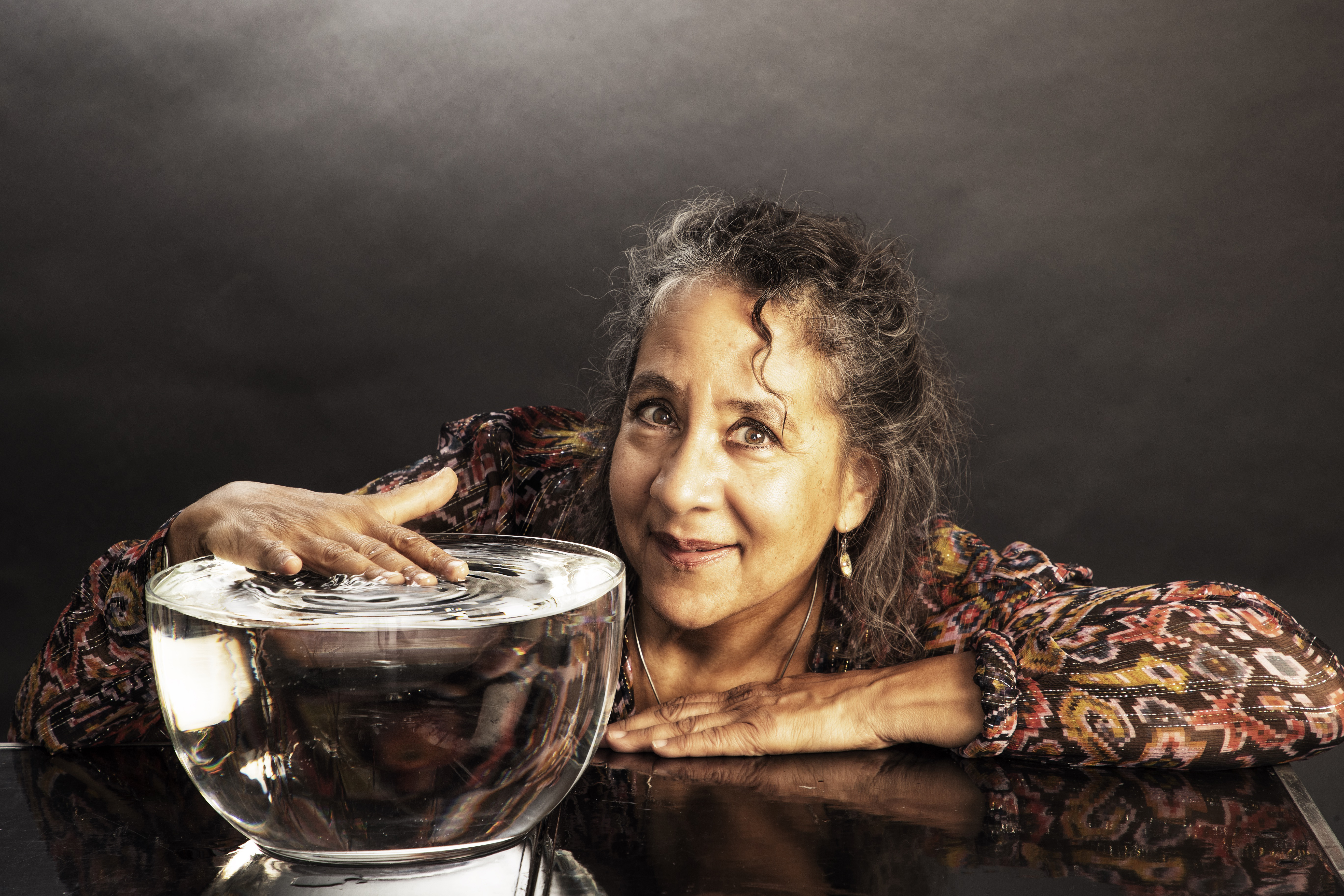 Photo: Per Morten Abrahamsen
Photo: Per Morten Abrahamsen
Marilyn Mazur taps into a deep sense of collective consciousness in her work. For five decades, the Danish drummer, percussionist, and composer has constantly pushed the boundaries of the jazz and new music worlds, focusing on works and performances that crisscross genres and influences.
Mazur is firmly established as a critical part of the jazz pantheon across her performances and recordings with Miles Davis, Gil Evans, Jan Garbarek, Palle Mikkelborg, and Wayne Shorter. Notably, she is the only woman to ever serve in a Davis group, working with him during his Tutu period in the 1980s.
But it’s Mazur’s own expansive compositions and multifaceted groups that are closest to her heart. Her many bands and ensembles are responsible for uncompromising, borderless, and adventurous music that involves the participation of some of the world’s most important musical voices.
Her current key focus is Shamania, formed in 2015. The all-woman group delivers a feast for the senses, whether one experiences it live or recorded. Shamania’s concept is based on the idea of combining female musical energy, and wide-ranging rhythm and vocal approaches. In concert, the group delivers immersive, dynamic, and uplifting performances, full of motion and drive.
Shamania recently released its second album, Rerooting, a collection of 16 new and reinvented Mazur pieces. It features a lineup including vocalist Josefine Cronholm, trumpet and horn player Hildegunn Øiseth, saxophonists Lotte Ankertenor and Sissel Vera Pettersen, trombonist Lis Wessberg, keyboardist Makiko Hirabayashi, bassist Ida Gormsen, percussionist Lisbeth Diers, and drummer Anna Lund. The recording reflects on emerging out of the COVID-19 pandemic into a period in which real-world, face-to-face connections and dialog became possible again.
Rerooting, as with most of Mazur’s work, goes far beyond Western percussion constructs. On the recording, listeners will encounter performances on instruments including the African lamellophone, Udu clay pot drums, congas, kalimba, tuned gongs, the Norwegian goat horn, and the waterphone, which is an extension of the Tibetan water drum.
In addition to Shamania, another current ensemble Mazur is involved in is Maluba Orchestra. It’s a 13-piece big band she co-leads with guitarist Kaspar Bai and saxophonist and flautist Fredrik Lundin. Founded in 2017, the group has one self-titled recording to its credit. Maluba Orchestra focuses on incredibly diverse, intricate, and mercurial compositions, and virtuoso performances.
Future Song, one of Mazur’s most ambitious, long-term bands, also has a recent retrospective release titled Live Reflections. It captures the Scandinavian supergroup in concert between 2008-2015, featuring some of the region’s most celebrated musicians, such as trumpet player Nils Petter Molvaer, guitarist Eivind Aarset, and bassist Klavs Hovman. Mazur has described the shapeshifting unit that explores the intersections between jazz, rock, new music, and global rhythms as her dream project, which also released four studio recordings before it dissolved.
Mazur discussed all three groups in detail with Innerviews during a Zoom conversation. She also delves into her career origins and the philosophical basis that serves as her modus operandi.
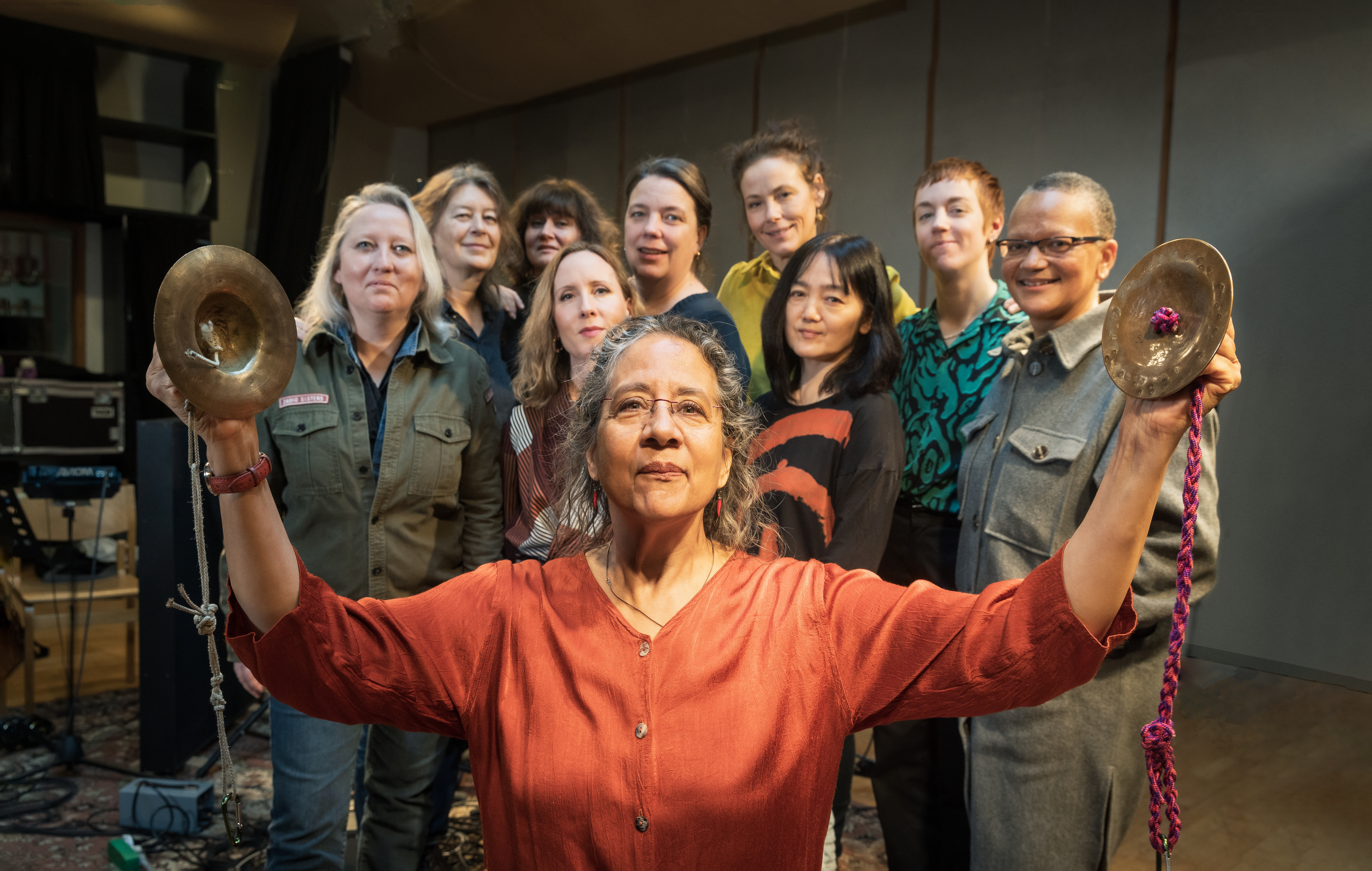 Marilyn Mazur and Shamania | Photo: Jacob Crawfurd
Marilyn Mazur and Shamania | Photo: Jacob Crawfurd
Describe the origins of Shamania and how they’re linked to your previous work with Primi Band, which existed between 1978 to 1986.
I started Shamania in 2015, and I never thought I’d create such a big and complex group as this, in a time when it’s very hard to travel with a large band. It’s expensive and it involves people from different countries.
What happened was the Copenhagen Jazz Festival said, "Would you revive your old Primi Band?" And I never stopped missing Primi Band. I said, "I can't revive Primi Band, but I can make a new version of it." And that's why I created Shamania. Primi Band was something I made when I was young, and it was a kind of experimental music theater. I was very much into dancing at the time. It wasn’t only women at the beginning. It involved people that were interested in using their bodies that were musical and were into music in one way or another.
Primi Band started with a performance as part of a demonstration called “Yes to a Living City, No to a Dead City, Yes to Living Music.” We did a dance performance at the Town Hall Square in Copenhagen with musicians and people that were into dancing. After that, I got the idea I wanted to form Primi Band. The word primi is derived from the ideas of originality, vibrations, being a social being, and what can we do together with music and movement. In the beginning, there was a male dancer and musician, but it became an all-women group. It was in the late ’70s and it was the days of women deciding “We can do everything. We want to do our own things.”
I would gather Primi Band a couple of times a week and we would experiment with different things. And it existed for many years. We would perform mostly in Denmark and sometimes in Norway and Sweden.
When I started playing with Miles Davis and touring the world, it was really hard to keep the group together. So, I gave up, eventually, but I'm still friends with a lot of these women. And I always missed the gathering of energy that we had in that group. So, when the Copenhagen Jazz Festival said, "Will you revive the group?” I said, "Okay, I'll make a new group with the same ideas of body, rhythm, voices, and gathering." I initially also said, "I want to make a Danish group so we can regularly meet and have these celebrations of music."
They responded, "Why don't you make a Scandinavian group?" I agreed to that and started looking for talent across Scandinavia. I called my musician friends and asked who is really great in these different countries. So, I gathered a group about the same size that Primi Band had, and of course with Lotte Anker, because she went the whole way back and there were no other musicians from Primi Band that were still full-time professional and into jazz. There are a couple of previous Primi Band members still into music, but they’re either teachers or playing rock music. I wanted the experimental quality. So that's how Shamania started.
In performance, Shamania feels like a communal experience for the musicians. Describe your approach to leading the group, while enabling each member to significantly contribute to the whole.
My general concept in all my groups is that I like choosing strong individuals that have their own voice. They're not playing with me to fulfill only my musical visions, but also to bring their own energy and their own musical voice into the music. So, it's always very collective as you say. I grew up as a musician in the ‘70s and during that period, all the groups were practically collective, with everyone making the music together. So, even if a big part of my creation is being a composer, there's always a big space for the individuals to improvise and provide their points of view. When I chose the musicians for Shamania, I tried to find individual voices. It’s a group with very young people and I’m the oldest member. So, we have people from 30 to 70 in it.
We started with meeting for a couple of days in my music house, which is where I work on music where I live. During those days, we got to know each other. Some of the musicians I had never met or heard live at all, but somehow, I just followed my intuition in choosing them. And it turned out to be a great group. We enjoyed each other’s company from the very beginning. We were just supposed to play one concert for the Copenhagen Jazz Festival, but it turned out to be so exciting that we continued. Now it's seven years we've been playing together. But because some of us live in different countries, it's very hard to gather the group.
So, we don't have this thing of meeting every week or even every month. But we do have this vibe of sharing some kind of way into the music. And it might be because we're all women, who have a smaller space in the jazz world, in general. We have that in common. We're used to being a little different than the other musicians in jazz. We all, of course, play in a lot of groups where we are the only woman or one of very few women. I think this does influence the way we think and the way we play together, without saying that it's a female expression, because I don't believe in that. Music is for everyone. It comes from everywhere and we all share it.
That's also one of my concepts—that music is there already, and it somehow comes down and turns into tunes. And then I share the tune with the other musicians, and then it might go in new directions. We might develop it together, which I like very much. I think it's my nature to always be listening and try to let everyone have a say. And of course, in the end, someone has to say no or yes or "Let's do this," which I also do.
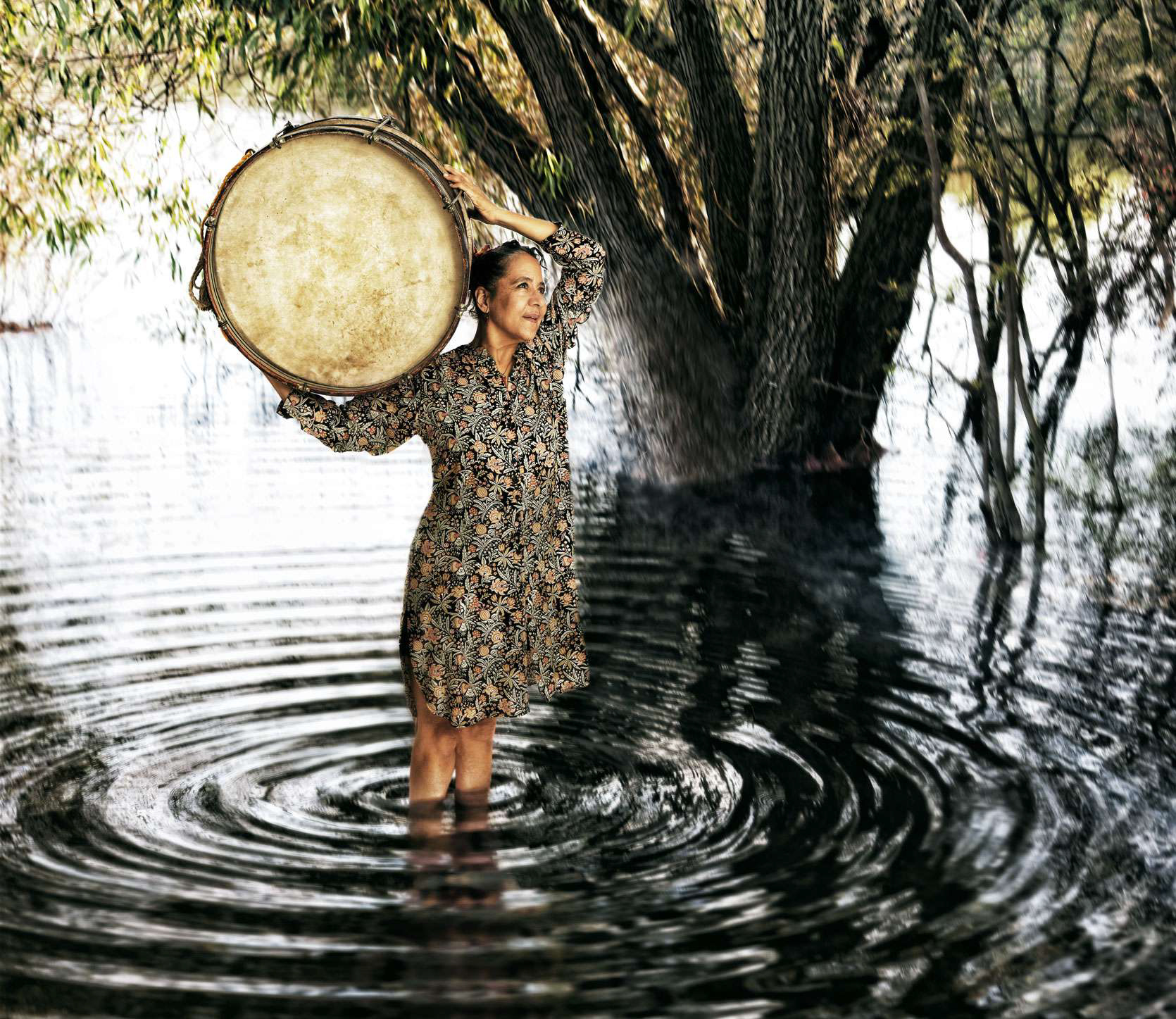 Photo: Per Morten Abrahamsen
Photo: Per Morten Abrahamsen
Let’s discuss the album title Rerooting and how it reflects the bizarre pandemic period we’ve all lived through.
We didn't work at all during the first really hard years of the pandemic because the Norwegians simply couldn't travel. They had all these quarantine rules. If the musicians came here, they would have to go to a quarantine hotel for two weeks, and they had other gigs they had to do. So, in the end it meant that we canceled gigs or postponed them. Many people also got COVID-19 over the years, but no-one got really sick.
I worked during the pandemic with other groups in Denmark. But during the first year, when all the musicians were sitting at home, it felt very sad. We asked ourselves “What’s going to happen now?” During that time, I wrote a whole lot of music, including a series of pieces called “Crown Elegy.” It was later called “Crown,” because it was a positive variation of corona, the virus that looks like a crown. All of the pieces had a little melancholic quality to them. Several are on Rerooting, including “Shadow Tune.” Two members of Shamania separated from their husbands and fathers of their kids in this period. That also contributed to these melancholic tunes.
The title Rerooting is about when we could meet again and start playing together. We had one gig in 2021 in Finland, where we also played the title tune. So, the record is very much influenced by the pandemic period.
What did living through the pandemic teach you about the value of music?
When you're all alone at home, music can bring you good vibrations and a positive atmosphere to be in. It can strengthen your mood in a good way. That's the main thing. I actually enjoy being at home, but I think without music it would be really tough, because it stimulates you in various ways.
But there’s the other thing in which you get desperate from being isolated and not being able to play and meet people and communicate. Music can turn some of those vibrations from a kind of aggressive and negative, angry feeling, into more of a positive energy. Without negative energy, it could transform into power. It could become life or a strong spirit. The piece “Virtual Towers” on Rerooting is an expression of that. It’s about being alive, instead of being angry.
How has Shamania evolved since its beginnings in 2015?
As I said, it's not a group that meets all the time. We meet when we have concerts in general, and we don't get to rehearse that much between the concerts. But we do feel that we’ve developed and evolved and got to know each other better. We also make more room for each other. And of course, I'm always inspired by the people in the group and try to compose for the group, and the individuals. So, that's the main evolution through which we’ve become a stronger group that’s existed for a long time. This brings us unity and that’s the main change. I think we all love the group very much and want to keep working together.
There's also a change on Rerooting in that we have Ida Gormsen on bass, because our original bassist Ellen Andrea Wang couldn't make it, because she has a very small kid at home. So, that also gives it a different quality, because Ellen plays acoustic bass and on the first album, and Ida plays electric bass on the new one. So, maybe things are a little rawer in the groove vibe on Rerooting.
As with several of your previous recordings, this album reflects your love of birds and nature. Describe how that manifests itself in your work.
I love trees. I love taking walks outside and just listening to birds. But it's not that I study them. I like to know the names of them when I see them, but it's not a literal thing with the birds, it's the kind of energy they represent. I like flying in an abstract sense. I don't really like flying on airplanes that much actually. But I like the vibration of being in the air. I like clouds. I like looking at the sky. I like looking at the birds.
It's kind of abstract just as the name Shamania is. Sometimes people ask me, “Are you a shaman? Are you doing magic?” What it’s about goes back to our discussion about Primi Band. It’s a group with rituals, but homemade rituals. We also make those in Shamania. It’s a way of talking about what music can do. Music isn’t a literal thing. It’s actually hard to talk about music because when we play music, we're not using words and squares. It's more like a vibration thing. We can be telepathic. We can communicate with the audience and with each other. And when it's at its best, we sort of go into a kind of parallel world—a dream world. That's not the same as when we're sitting on the computer or writing.
There's this tune on the record called “The Birds Are Early Out,” and this is actually a poem from my teenage years, and it's not even proper English. I know you aren’t supposed to say it that way, but that's the way these words were made. It's elaborating on the idea of being up late at night—so late, that the birds start singing in the early morning. And that can put me into a crazy mood for composing. It’s an abstract variation of the idea that I’m listening to the birds singing when I should be in bed.
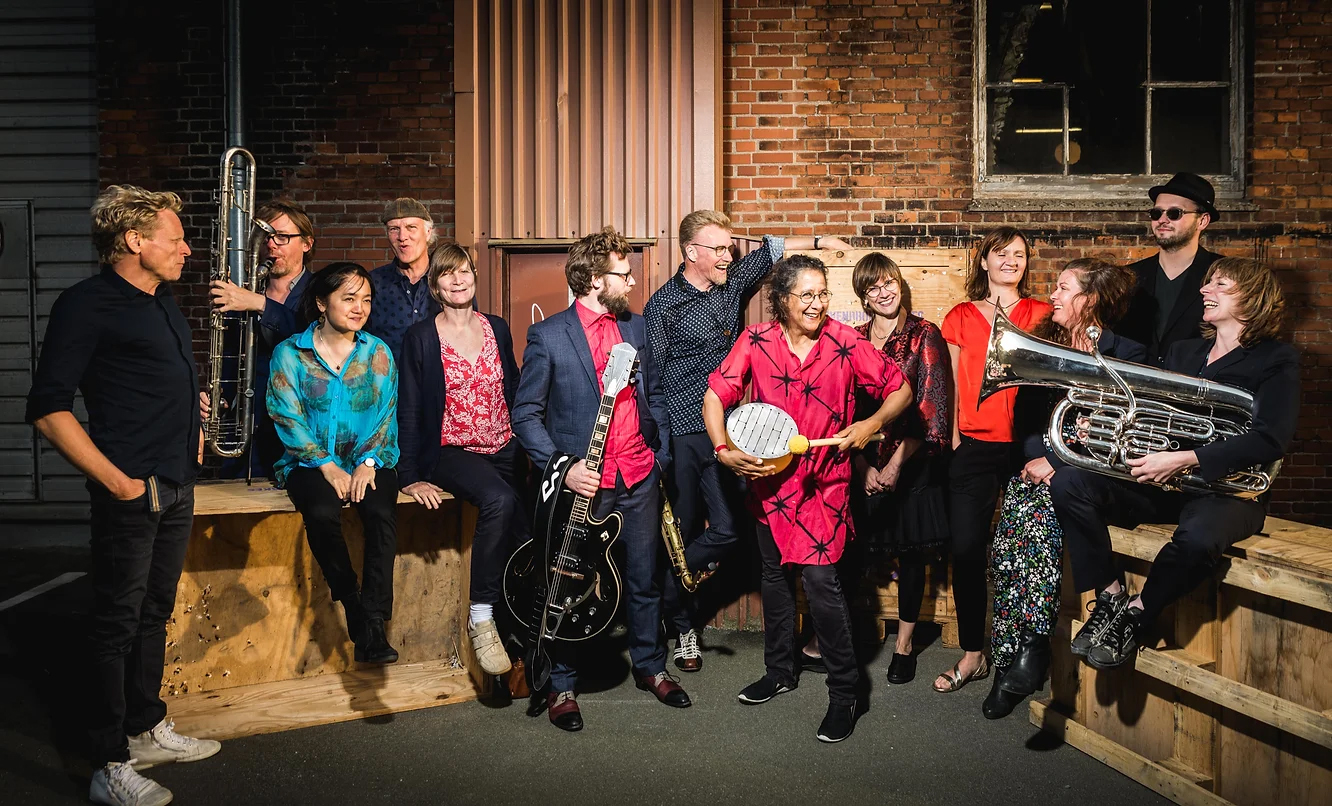 Marilyn Mazur and Maluba Orchestra | Photo: Niels Bundgaard
Marilyn Mazur and Maluba Orchestra | Photo: Niels Bundgaard
Maluba Orchestra’s debut recording includes some epic and ambitious compositional works. Tell me about the concept for the group.
Maluba Orchestra has existed for five years and started because I had been writing some different music for big bands. I work a lot with Fredrik Lundin, the sax player. We had been talking about making a kind of workshop orchestra together where we could develop our writing for big bands. And it never happened. After some years, I realized if it's going to happen, I would have to take the initiative. I did feel I have so many groups already, including Shamania, and wasn’t sure I could create another. But then I took a big band course with Darcy James Argue in Copenhagen. Fredrik was also attending the course, as was a guitarist called Kasper Bai.
For some reason I was telling Kaspar that Fredrik and I had been talking about making an orchestra. Kasper is a young guy who’s a very good composer and arranger. He said, "Oh, I would take care of all the business—all the practical matters,” if we made a group together with him. So, that's why we created Maluba Orchestra. We wanted to have a workshop in which we could write more orchestrated music with interesting different instruments. And Kasper would do the booking and gather people and stuff.
I have the rehearsal room, and so we created Maluba Orchestra with the decision that we wanted an equal number of women and men in the group, and that they should play interesting instruments. We write complex music for this group, not because we want to, but because we now have the option to use all these interesting instruments.
We're 13 musicians in total. There are eight wind instruments. So, there are a lot of options. There's a contrabass clarinet in the group, and there's of course the bass flute, which Fredrik plays, which I use a lot also in my quartet. I love the bass flute. There's a tuba, and different clarinets and saxophones. Fredrik also plays a G soprano. It's a little bigger than a soprano sax. There’s also another drummer in the group. And I play a big percussion setup with lots of gongs, glockenspiel, and a sun drum, which is a wooden log drum you can tune with magnets. So, this provides a lot of possibilities for writing.
Reflect on your boundary-breaking group Future Song, and its accomplishments across its lifespan between 1989 and 2010.
I’m getting a little sad when you ask me that, because I think Future Song never got as much attention as I would have liked. When I created Future Song, it was when I decided to leave Miles Davis’ group. I was in his band twice. The first time he sent me home. The second time, I decided I wanted to go home and make Future Song.
I got some grants for Future Song and had a dream to make a very telepathic group. I’m using the word telepathic again, but it captures what I mean. I wanted a group in which people were communicating and playing together and had a common way of being together in music. So, I gathered some of my favorite musicians in 1989 and made totally new music for the group. In the beginning, we went on a very long tour, which was inspired by my years with Miles. It was supposed to be kind of big time, traveling with lights and playing big stages.
Future Song performed for more than 20 years, but slowly, everyone in the group also created their own projects and were busy with them. It became harder and harder to gather the group, and harder and harder to get the gigs together. It never really expanded to the point where it was going to have the momentum it needed. We also didn’t have a good booker, so we didn’t have that many gigs after the first few years. Also, the singer Aina Kemanis, who was from California, gave up on touring, because transatlantic travel was too hard for her. So, she stopped singing and stayed home. The group changed and lost some of its initial strength.
Future Song kept on playing through 2010, and then I gave up and started working with some of the musicians in other collaborations. I had something called Spirit Cave in which Eivind Aarset and Nils Petter Molvaer were also in the group, and we would purely improvise. We also had live sampler from Jan Bang in the band. It was a totally different thing. I think Nils Petter and Eivind actually preferred improvising than playing my more complex compositions. So, there were different things that meant activity was pulling away from Future Song.
In 2015, when I had my 60th birthday, I told my manager at the time that I wanted to perform 60 concerts that year. He didn’t succeed in achieving that number, but I played a lot that year. One thing I decided to do was gather Future Song, my favorite group of all time. So, we reunited with whoever was possible at the time, Because Aina stopped singing, we got a new Norwegian singer, Tone Åse. We played two concerts that year, and music from them was released on the Live Reflections album in 2020. There was going to be another reunion in 2020 for a record release concert, but because of Coronavirus, it never happened.
Unfortunately, Future Song doesn’t really exist anymore. But if anyone asked us to play, we would happily do so.
I should also mention that during the pandemic, my husband Klavs Hovman and I were brainstorming. Because we couldn’t gather Future Song again, we thought “Let’s make a new group, only involving people who live close by, so we don’t have the travel expenses. We can meet and play, even if COVID-19 shuts down other countries, again. And this group is called Now. It’s like an elaboration of Future Song. We’re moving from future and past, to the present moment. That’s what the music is about—improvising and communicating in the moment.
Now includes Ania Rybacka on vocals, Kasper Tranberg on trumpet, Makiko Hirabayashi on keyboards, Samuel Hällkvist on guitar, and Klavs on bass. We've only played two concerts so far, but I hope we'll get more in 2023.
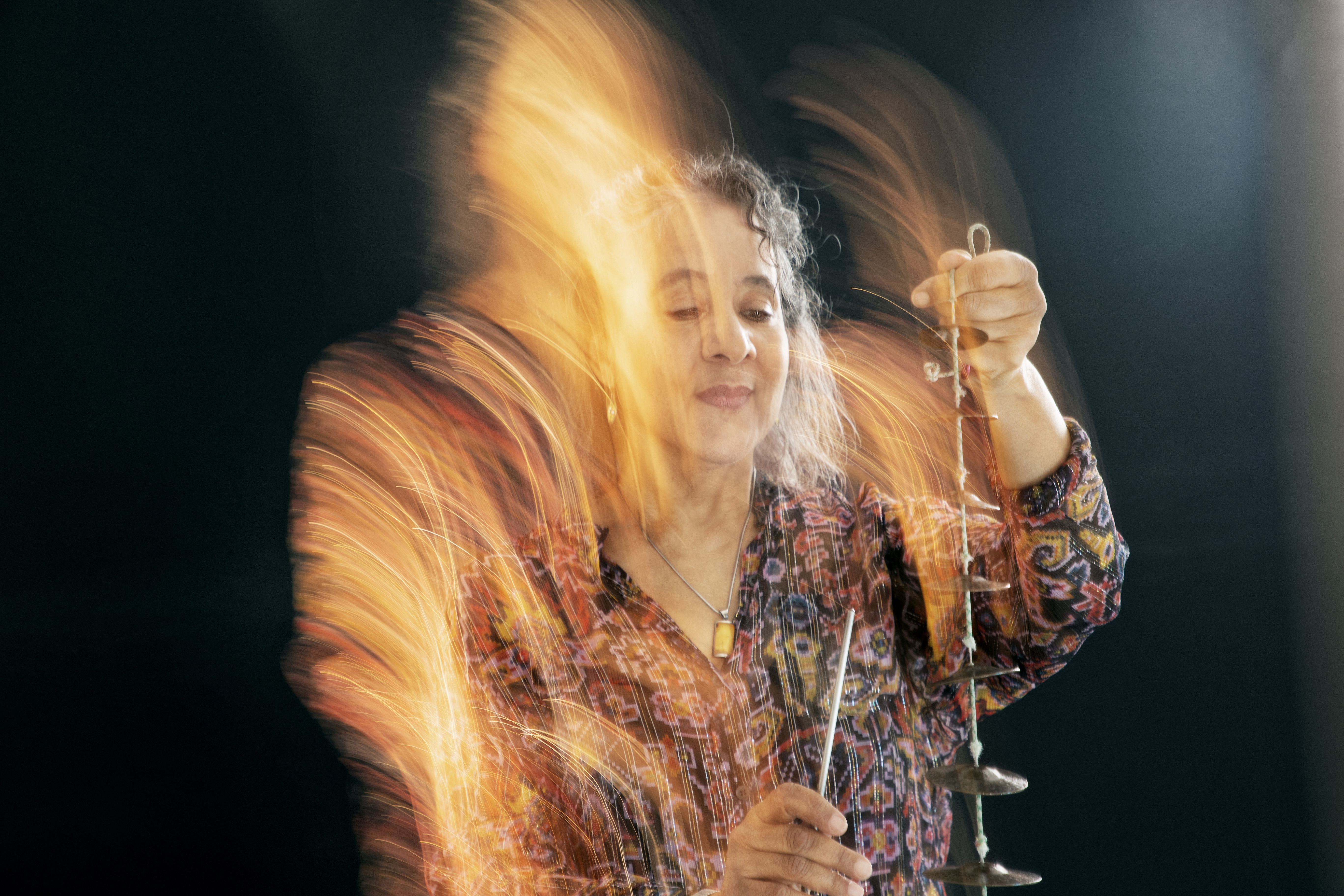 Photo: Per Morten Abrahamsen
Photo: Per Morten Abrahamsen
How do you look back at the first album you released under your own name, 1984’s MM4 by the Mazur Markussen Kvartet?
The Mazur Markussen Kvartet combined my name with Uffe Markussen, who is a sax player, and the guy I was with at the time. It featured mainly my own compositions. It was a very nice group. MM4 was maybe something that was more inspiring for the jazz world. It was closer to jazz in a typical sense. It was also the first group in which I was purely a drummer. The group ended when I stopped being together with Uffe, a long time ago.
I had already created Primi Band at the time of MM4, which I felt was much more my identity. I was much more creative there.
I should also mention that even though MM4 is the first album with my name on it, I had the collective group Ocean Fables a little earlier than that. And even before that, I was already a musician for many years. I started composing as a teenager and was always into it. I started out as a piano player. My first band was called Zirenes, in which I was playing Fender Rhodes and singing, among other things.
Reflect on working on Miles Davis’ Aura and subsequently going on tour with him.
I have to talk about Palle Mikkelborg as well, because he was the one that created Aura and composed the music. As I mentioned, I musically grew up with the music of the ‘70s, and I loved Miles’ work from that period. Most of my time was spent playing in Denmark and the rest of Europe, but not America. I hadn’t previously visited America as an adult before Miles said, "Come join my band." At the time, I had turned 30. I was born in New York, but my family immigrated to Denmark when I was six, and I never went back until I played with Miles.
I grew up with Palle’s music in the ‘70s as well. I would listen to his music all the time. And I would go out dancing to his bands. Then he got to know me, and I was playing with the radio groups that Palle would sometimes conduct and compose for.
Miles was invited to come and get the Sonning Music Award in Copenhagen in 1984. It’s a big prize that Stravinsky and many famous classical icons have received. I think no-one from the jazz world had received it before Miles. He agreed to come, and he was just supposed to receive the award. And Palle had written Aura as a celebration of Miles at the time. Miles liked the music and so he wanted to play on it. So, he came, and he played on the last part of the music during the ceremony, and he enjoyed it. During the rehearsals, the piano player said to me, "Miles wants to say hello to you.” For me, having the hero from my youth wanting me to say hello to him was a really big deal. After the ceremony, Miles also decided he wanted to be part of the Aura recording.
So, Miles came back in January of '85, and we were in the studio together for a whole week. I got to know him there. We recorded Aura and I really thought Palle wrote some very interesting music for it. I thought it was really different from the music Miles was into at the time, and probably that's what Miles was intrigued by, I would think. It was more transparent, composed, and not quite as groove-based, but on the record, there are also some grooves. And Palle had translated the letters in Miles' name into a code where it would turn into musical notes and create the melodies for some of the composition. And he used the different colors that Palle said he could see in the aura of Miles.
We worked a lot on it in the studio. Everyone was very creative, cutting it up, and putting it together in different ways.
Aura became a very exciting album, but it took many years before it was released. After recording Aura, I played at a festival in Norway with The New Jungle Orchestra. And Miles had a concert there at the same time, and the whole group wanted to go hear him. So, we went to the concert, and it was sold out, but they let us sit in front of the audience to see it. Miles spotted me there on the floor and said into his trumpet, "Marilyn, sit in." And at that time, I would always get airsick, so I was not feeling that great. I said "Oh, I'm too tired," to Miles.
And so, they played on, and then he came back a second time and said, "Come and join this reggae with us." What could I do? I jumped up on the stage and joined the band. And it was after that that he asked me to join his group. So, that's how I came back to New York for the first time since I was six.
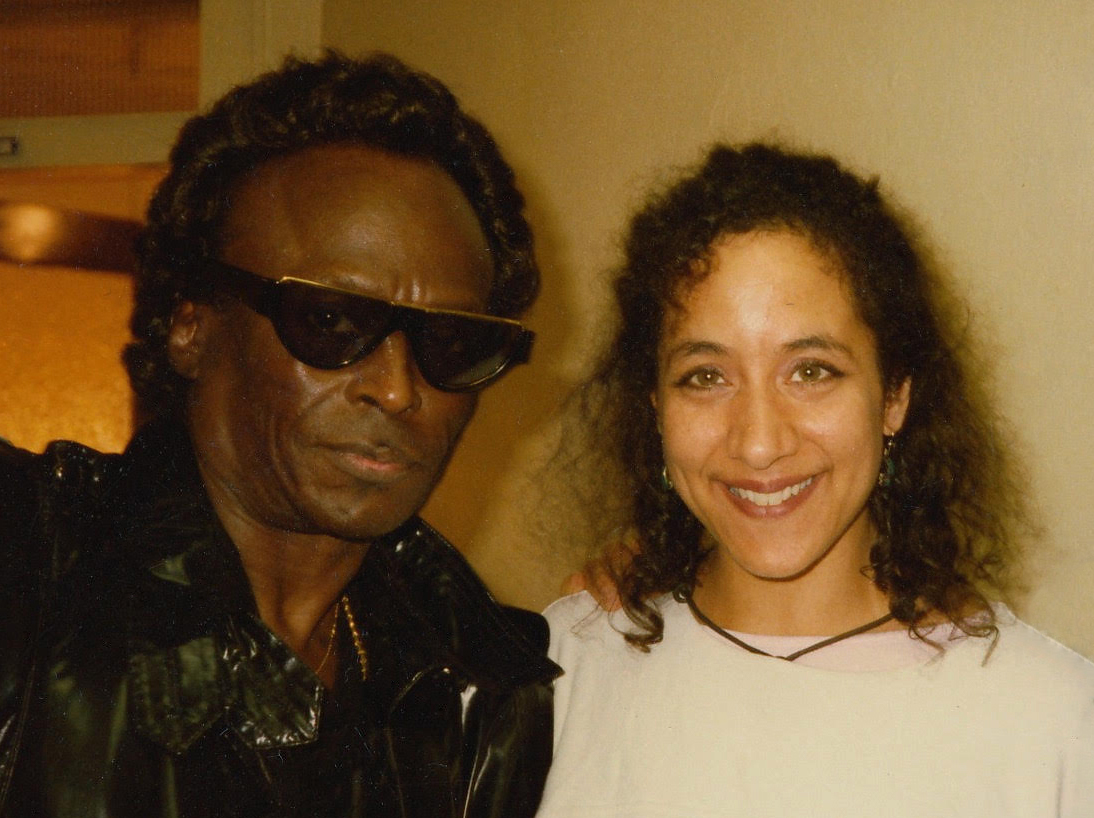 Miles Davis and Marilyn Mazur, 1988 | Photo: Marilyn Mazur Collection
Miles Davis and Marilyn Mazur, 1988 | Photo: Marilyn Mazur Collection
You’re the only woman to ever be part of a Davis band. Provide some insight into what that experience was like.
It was about being a human being. Sometimes you don't really think about questions like “Am I a woman or am I a man?” or “Am I the only woman?” It's always natural for me to feel, as we discussed earlier, a little different. For me, it was a culture shock just to come to America and join a group. There was also the whole color issue. In Denmark, I was one of very few kids of color when I grew up, which I didn't think that much about. My sister, who was a couple years older, thought a lot about it and wasn't comfortable. So, she left Denmark and went back to New York when she was 17. She simply didn't want to become Danish.
When I joined the jazz scene in Denmark, I noticed that I was one of very few women, but I didn't want to accept it. I didn't understand it. I thought “Why is it like that?” And then at one point, I noticed I was playing piano with my first groups and realized there are no female drummers, and that was a kind of reason for me to start playing percussion and drums. I thought, “I have to see what that is going to be like. I have to try that." And then I started becoming a percussionist and drummer, and then I didn't think so much more about that. It's just something I did.
When I joined Miles' group, Mike Stern and Bob Berg were white and the rest of the group were people of color. And I think maybe for them it was weird that there was a woman joining. It was also a little weird in that there was already a percussionist with Steve Thornton, as well as Vince Wilburn playing drums.
But for me, it was just strange coming to New York, which was my birthplace, and joining a group of strangers. I had grown up with all these collective groups where the musicians had chosen each other's company and had decided what kind of music they're playing and creating. Whereas in Miles’ group, he had chosen the people, and we had to work it out, which of course, we did. It wasn't easy, and the music was very different from where I came from.
With Miles, in a way, we were playing pop music at that time. It was also very masculine, which I didn't mind. I've never been someone who says, "I only want to play soft, poetic, or feminine music." I've always also wanted to be able to groove and play fast, but I've never wanted to be different from what I felt I wanted to do. So, the drive had to come from within.
Joining Miles' band was also strange in that I was very much playing beats and fitting into a big group. We were nine musicians at that time, so it was a challenge. But it was also exciting. I think Miles asked me to join because he also wanted to have more colors and mysteries back in his music, and not only be playing new versions of “Human Nature” and different hits of the time.
Prince was emerging and people said he put more female energy and musicians into the world. I'm not sure about that. There were also all these stories about Miles at that time saying he wasn't always treating women properly. So, I didn't know what I was getting into. It was just that he called me on a Sunday and said, "Be here Wednesday." And I'm like, "Oh, what?" I had never taken a transatlantic flight in my life at that time. When I went to Denmark as a six-year-old, we sailed on a boat for a week to get to Copenhagen. I didn’t even have an American passport. I got that sometime later, because they could find in their records that I was born in America. So, everything was a little scary. Also, I had brought all these instruments with me. I had tons of flight cases, because I had a very big setup. I went straight from the airport, a little airsick, right to the rehearsal to meet all these strangers. And I looked like shit. Miles said, "Go take a bath." Then I came back, and I looked better.
But it was very exciting to get into this, and I did my best. After a while, I also got into sampling my own sounds. The first sampling keyboards arrived in the mid-‘80s and I got one. I was also supposed to play the D Drum, which was the Simmons of the era, but I didn’t like that sound. So, I made my own that was similar, but more mysterious. I’d create my own sounds and play them on an Octapad. I was very much into that. I was able to combine playing keyboards with my percussion setup.
It turned out that Miles was so respectful of me. I just wanted to add to the music. He was never in any way sexist or treated me differently from men. Sometimes, he’d tell the drummer or guitarist how to play and fit into the music. But with me, he said, “If you want to dance, you can dance.” So, I would dance. I had a little dance solo in the program, and I was very free. He wouldn’t really tell me what to do. We didn’t talk very much. He would send signals and I would react to them. I thought that was very inspiring. It was a great way to communicate. It was one of his powers that he could do that.
You said earlier in the conversation Davis sent you home and then called you back. What happened?
Well, during the first year, we were nine musicians. It included two percussion players plus a drummer. And through that period, I think the group changed somewhat. We had two different bass players and two different guitar players. We were going to Martinique to play a concert. I had been in the group for about a year at the time, and there were some weird problems with the contract. In those days, we traveled with all the gear by cargo. So, all these instruments, including my big setup, had been sent to Martinique that way, which cost a fortune. And somehow, the gig didn’t happen. The manager said, "Someone's got to go" in order to save money. And at that time, it was me. So, the manager called me up and said, "Yeah, you have to go home. You can keep the flight case." They had given me that as a kind of souvenir. And I was sent home.
I don’t even know what to call that situation. It’s one of those weird stories. My mother died a month later. If I hadn’t been sent home, I wouldn’t have seen my mother again. There was a higher meaning with that.
Also, I didn’t mind too much being sent home, because it was hard being on the road, and I couldn’t continue with my own music very much. I actually wrote a big band piece while I was on the road. It was the weirdest big band piece I ever wrote, because I didn’t have my piano to work with.
After I left the group, I got a call to play with Gil Evans. And then I played for a year with Wayne Shorter. And after that, Miles changed his group and invited me back. We had a different drummer. So, I was the only percussion player in the second group, and it had a better chemistry, I must admit. I thought it was much more interesting during the second round. So, I stayed for one more year. By that time, I had played for three years touring the world and being away from my home. I was a bit fed up and needed to go home and continue with my own creations. So, that’s the story.
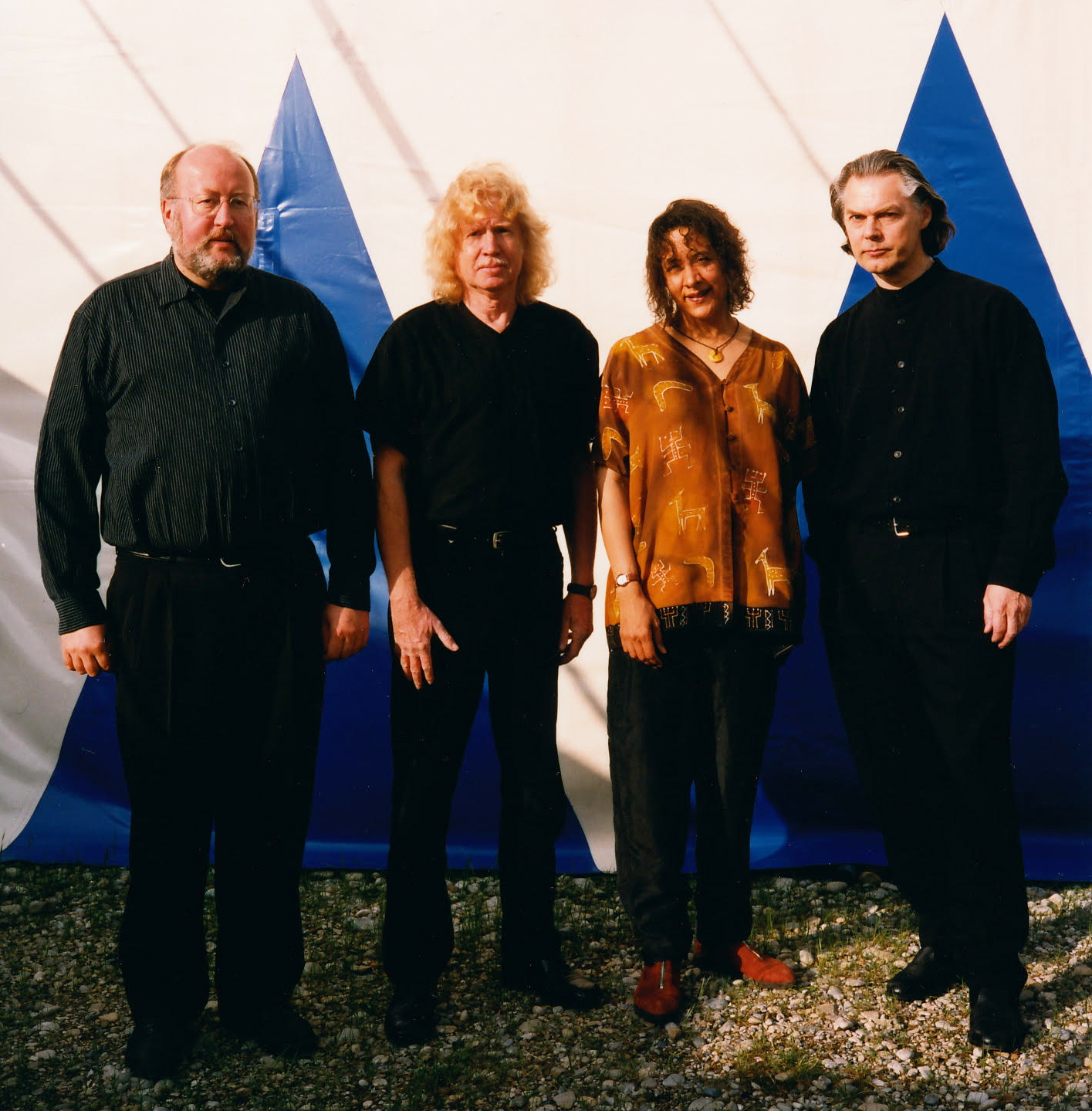 The Jan Garbarek Quartet, 1995: Rainer Brüninghaus, Eberhard Weber, Marilyn Mazur, and Jan Garbarek | Photo: Marilyn Mazur Collection
The Jan Garbarek Quartet, 1995: Rainer Brüninghaus, Eberhard Weber, Marilyn Mazur, and Jan Garbarek | Photo: Marilyn Mazur Collection
You performed with Jan Garbarek for many years. Describe what that journey was like.
I played with Jan for 14 years in his group. During the first years, it was a little on and off because I became a mother right before he called me. Jan is much closer to my upbringing, musically. He's European and Scandinavian. He made this transparent through what they call the Nordic sound. So, I felt much more related to his music, I have to admit, which is also why I stayed in his group for so long. I felt at home in his music. He was another guy that I listened a lot to as a teenager.
The recordings I did with him are very produced compared to playing live with him. I think it’s because Jan is also a great percussionist. Many people don't know that, but he would like to fool around at home and make different sketches for his music. So, in the studio we often worked on things he had prepared. Not all the music, but some of it.
Playing live with him was something I developed a lot through. One thing was everyone in the group had their long solos as part of the concerts, which was very inspiring. I’d get to do 10-minute solos in which I got to enter into discussions with myself. The other two members of the group somehow had very set roles in playing very composed music. We were playing the same music for many years, and it wasn't always so free. I could play more or less the way I interpreted the music because as a drummer and percussionist, you don't play so much what's written, you play what you hear.
I toured a lot with Jan, playing many concerts for many years. Playing to big audiences across the world is a learning experience and helps you perform at 100% on stage. I learned a lot about that from Miles, too, where we played to gigantic audiences. But the music with Jan was more esoteric, transparent, and airy. You have to be even more present, because you’re not just grooving. You’re also creating these vibrations. I think the goal was to have the audience feel like they’re dressed in these emotions.
You’ve been on myriad record labels across your career and experienced every transition the industry has made since the ‘70s. What’s your perspective on the current state of the music business?
I’m not someone that makes money from recorded music. I think for a lot of musicians that don’t make commercial music, if you don’t make records, you’re not so visible, and you don’t get the gigs. So, the recordings are very important.
Personally, I like to have physical LPs and CDs—something you can touch. In the liner notes, you can read who made the music and who’s playing on it. On the Internet, you don’t always get those details, which isn’t so nice. So, I still believe in physical media, but I’m also old.
Of course, there has been technological development and things have gone that way. It’s important to be visible on the Internet, which I try to be as well as I can. The albums are possible to find, but sometimes they’re mixed up, and the music is in the wrong order. My idea is that an album can have a story that’s told in a different way than just through the single tunes. But now, there’s more focus on single tunes, which I try to consider. Things have evolved and developed, and I try to accept those changes.
Rerooting came out on a new label called Clap Your Hands. It was created by my management, Esteam Music. One of the main people at Esteam Music is Sarah Chaksad, who's a musician herself. She decided, together with the producer of the Rerooting album, Patrick Zosso, to create this artist-share label. It’s an experiment to see how a different approach can work and to see if artists can be compensated properly.
The truth is people like me have to play live. It’s how I make most of my money and that has always been the case. The only album I actually ever made money from was my Elixir album on ECM with Jan Garbarek as a guest. It probably made money because he has a big name. He’s playing a little more like he did when he was young on it, so that album is popular. But it didn’t make a lot of money.
I’m fine. I’m not starving in any way, but that’s because I play with a lot of people across a lot of concerts and have always done that.
The name Shamania naturally implies that there is a spiritual component to your music. Describe it for me.
Shamania and Rerooting are about finding our roots, together. When we collaborate, I am asking the questions “What can we create?” and “What happens when we join our spiritual powers?” I think of music as a way of being spiritual together. It’s a way of joining our energies and seeing what can arise from that. Of course, music is both physical and spiritual. When music is at its best, we are not really individuals anymore. We have a joint force in which the music is the living being and not about the individual people that are making it together. So, that's sort of the idea of Shamania. The music is the ritual.
Watch the video podcast version of the interview: